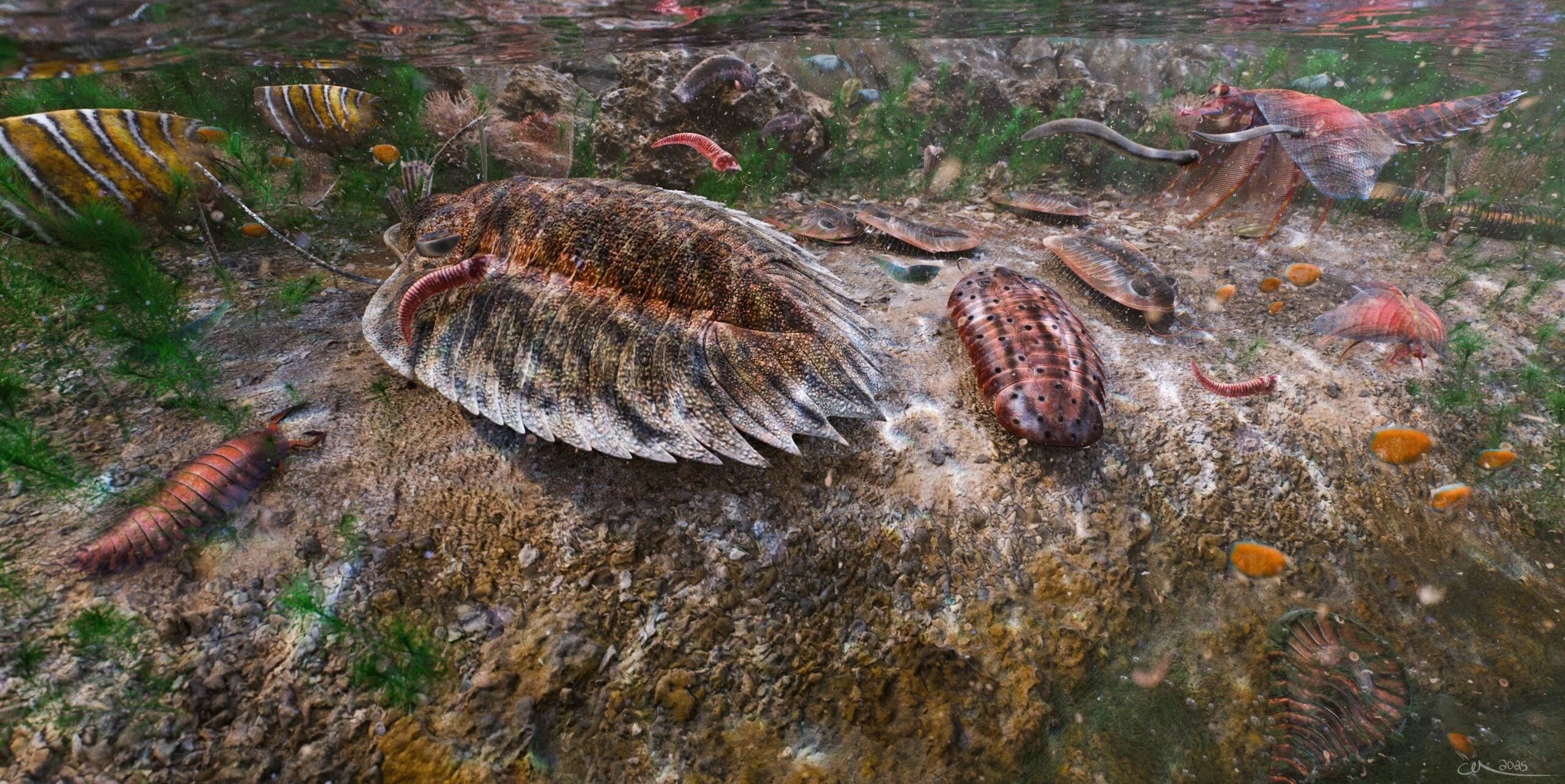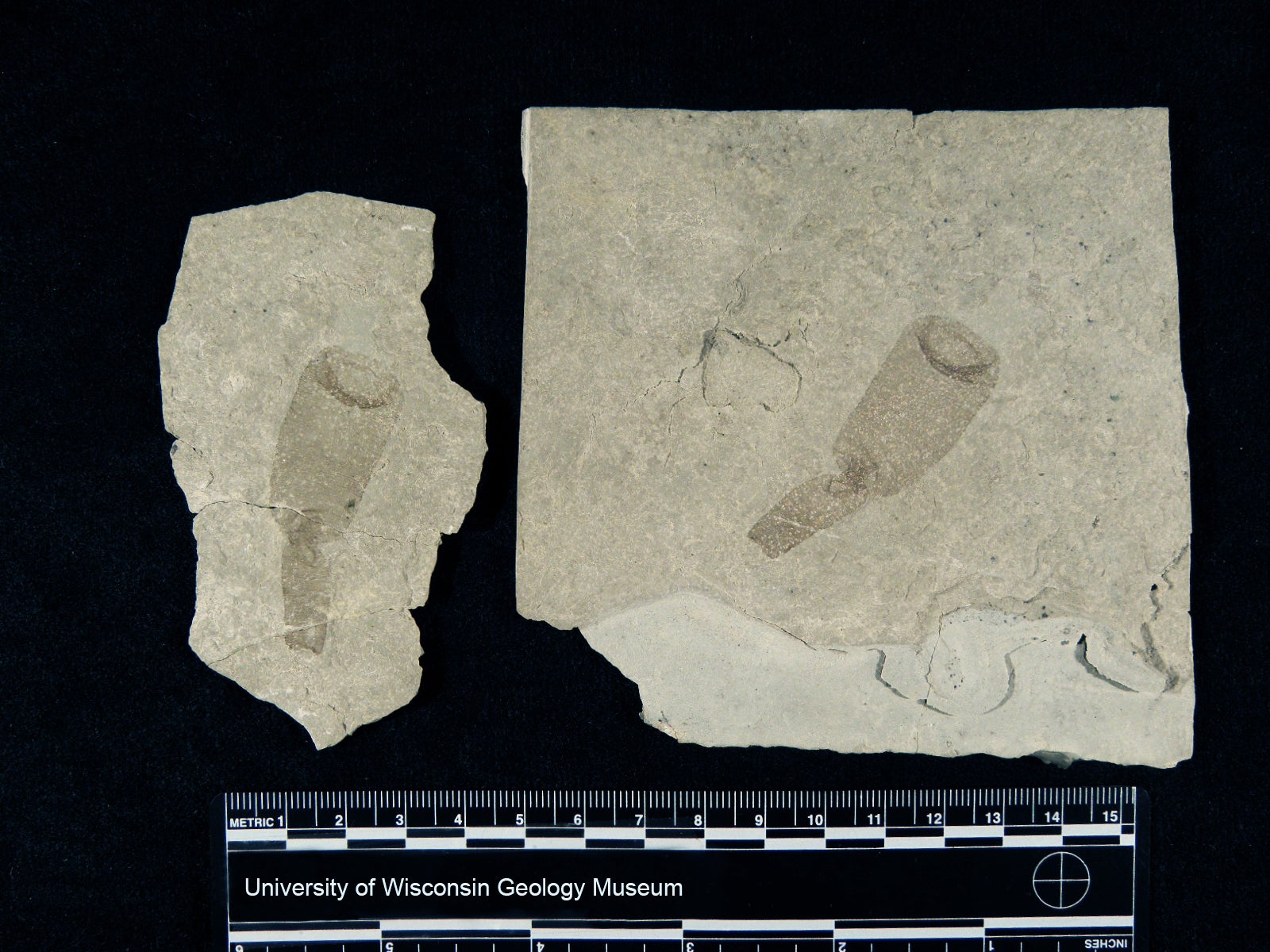In 1984, paleontologists found and saved a portal to prehistoric Wisconsin right in Waukesha County. Scientists are still discovering new fossils from it — most recently a leech that has pushed back the origins of the species by millions of years.
It is hard to imagine that millions of years ago, southeast Wisconsin was just a warm, shallow ocean. But evidence of that long ago past can be found in the Waukesha Biota.
The biota is a sedimentary deposit containing more than 2,000 fossils of small, aquatic animals from over 437 million years ago. Researchers salvaged the collection of specimens found at a Waukesha quarry. It was stored at the University of Wisconsin Geology Museum.
News with a little more humanity
WPR’s “Wisconsin Today” newsletter keeps you connected to the state you love without feeling overwhelmed. No paywall. No agenda. No corporate filter.
The Waukesha Biota, also known as the Waukesha Lagerstätte, is special because it holds a mass amount of paleontological information. It is preserved at the museum as a 12-centimeter thin layer of mudstone filled with rare fossils of soft-bodied organisms.
Today most of the original biota is gone, but researchers are still making new discoveries from the museum’s collection. The most recent: a leech, older than dinosaurs, that preyed on living organisms.
It is the oldest leech fossil ever found. The finding pushes the species’ initial origins back 200 million years.
Carrie Eaton is the museum’s curator and has managed over 150,000 specimens. She says the biota is one of a kind.
“The diversity of species from this site and their high quality of preservation offers this really rare glimpse into this window of geologic time,” Eaton said.

The creatures within the biota are from the Silurian period and lived in a shallow lagoon environment. The geology of the site allowed for exceptional preservation of soft bodied organisms.
That includes the recently discovered leech.
“This particular fossil is so unique because that preservation is just top notch. Because that soft tissue is so well preserved, you can see the structure of the organism right down to its little segmented rings,” Eaton said. “And the specimen demonstrates the rarity of species that are preserved at the site.”

The leech is among many discoveries still coming from the Waukesha Biota. In 2020, researchers found the world’s oldest scorpion fossilized in the biota, and a unique trilobite was named for the site last year. Other primitive predators have also been identified recently.
Though southeast Wisconsin is no longer part of a shallow ocean, Eaton said the Waukesha Biota helps Wisconsinites see underwater life from over 400 million years ago.
“I think it sparks curiosity to think about the fact that our streets and sidewalks and roads that we walk on every day have these ancient treasures just right underneath our feet,” Eaton said.
Wisconsin Public Radio, © Copyright 2025, Board of Regents of the University of Wisconsin System and Wisconsin Educational Communications Board.
Source link


